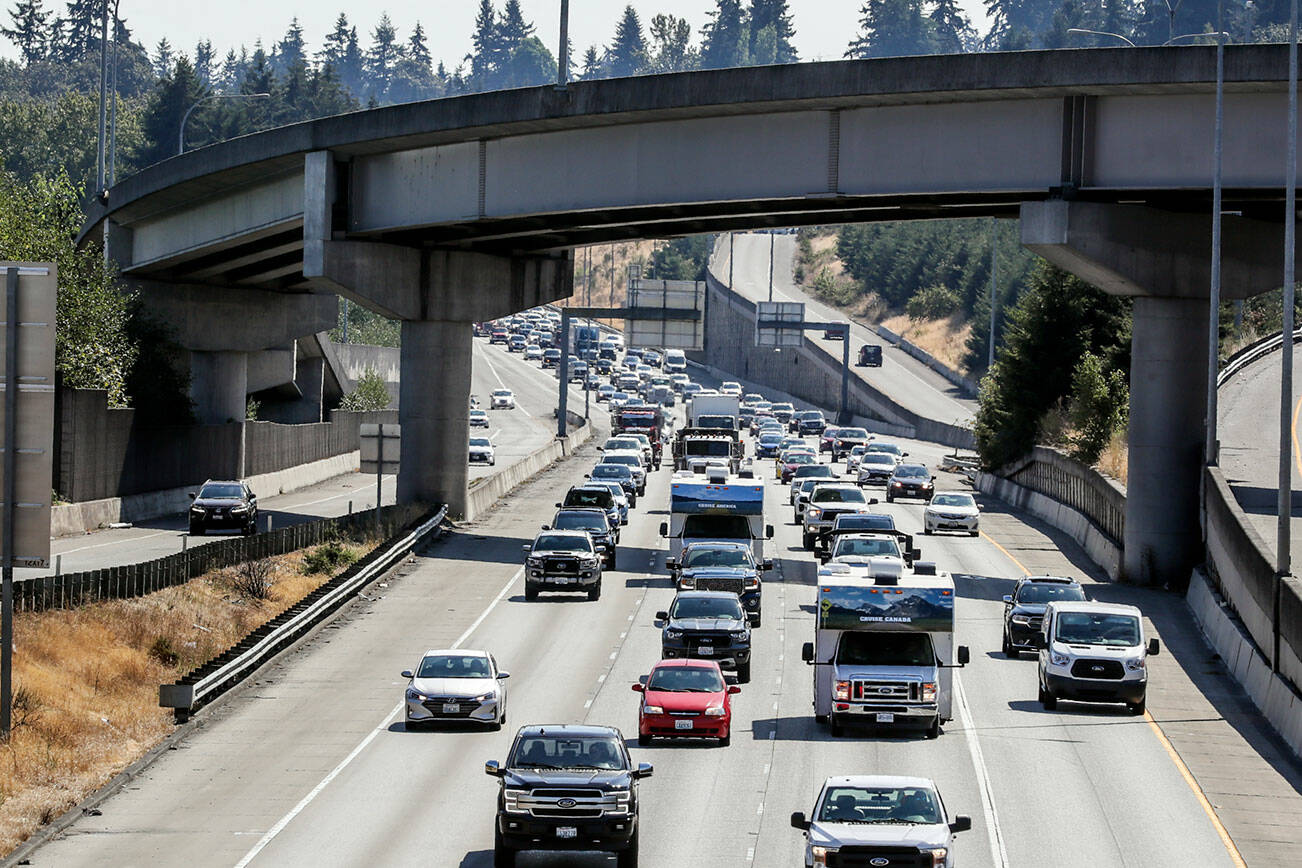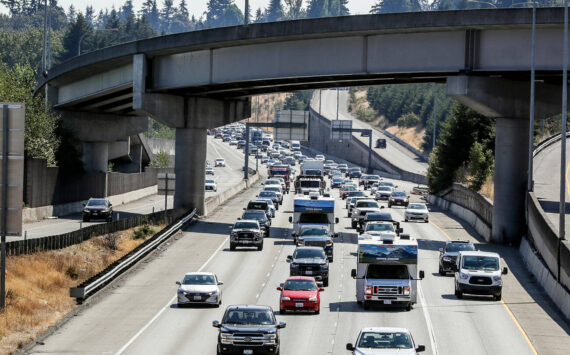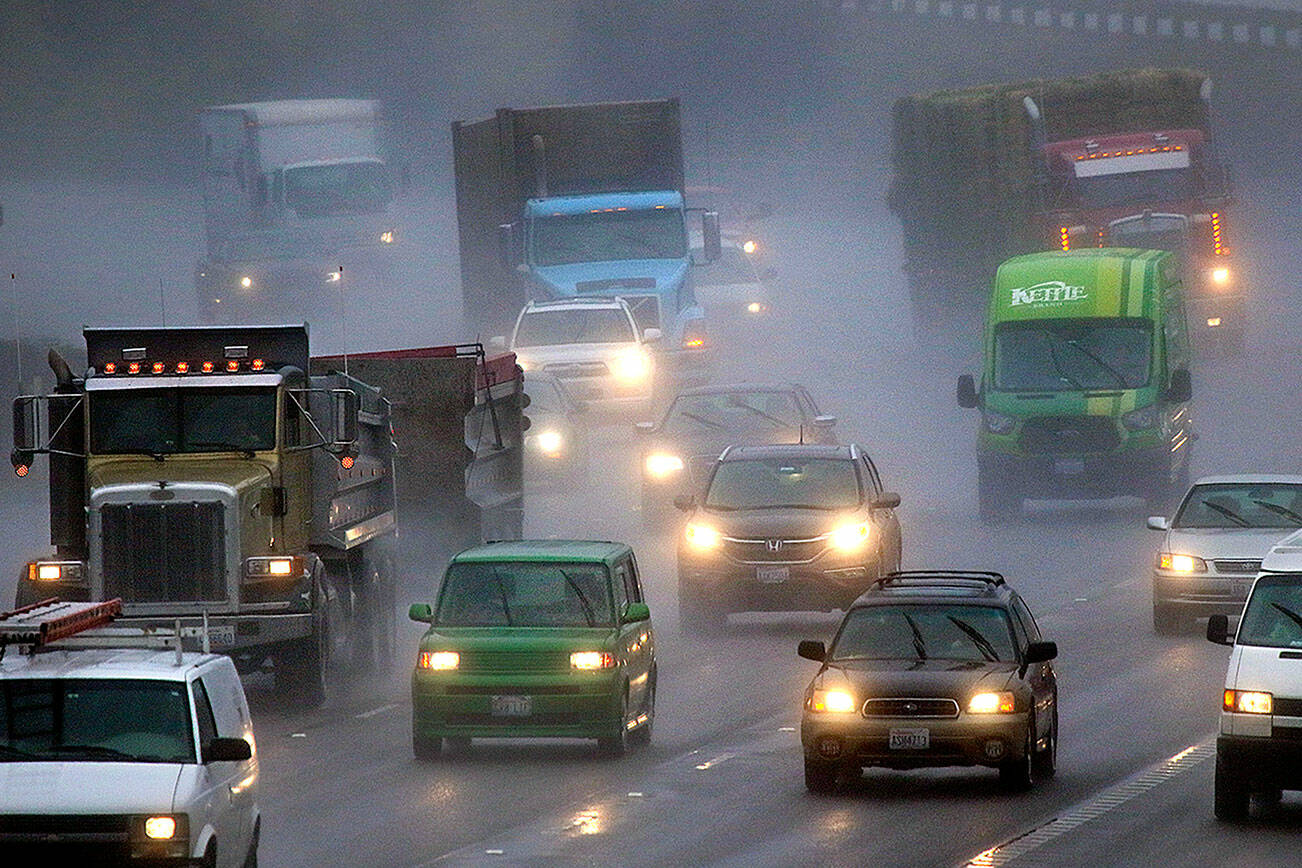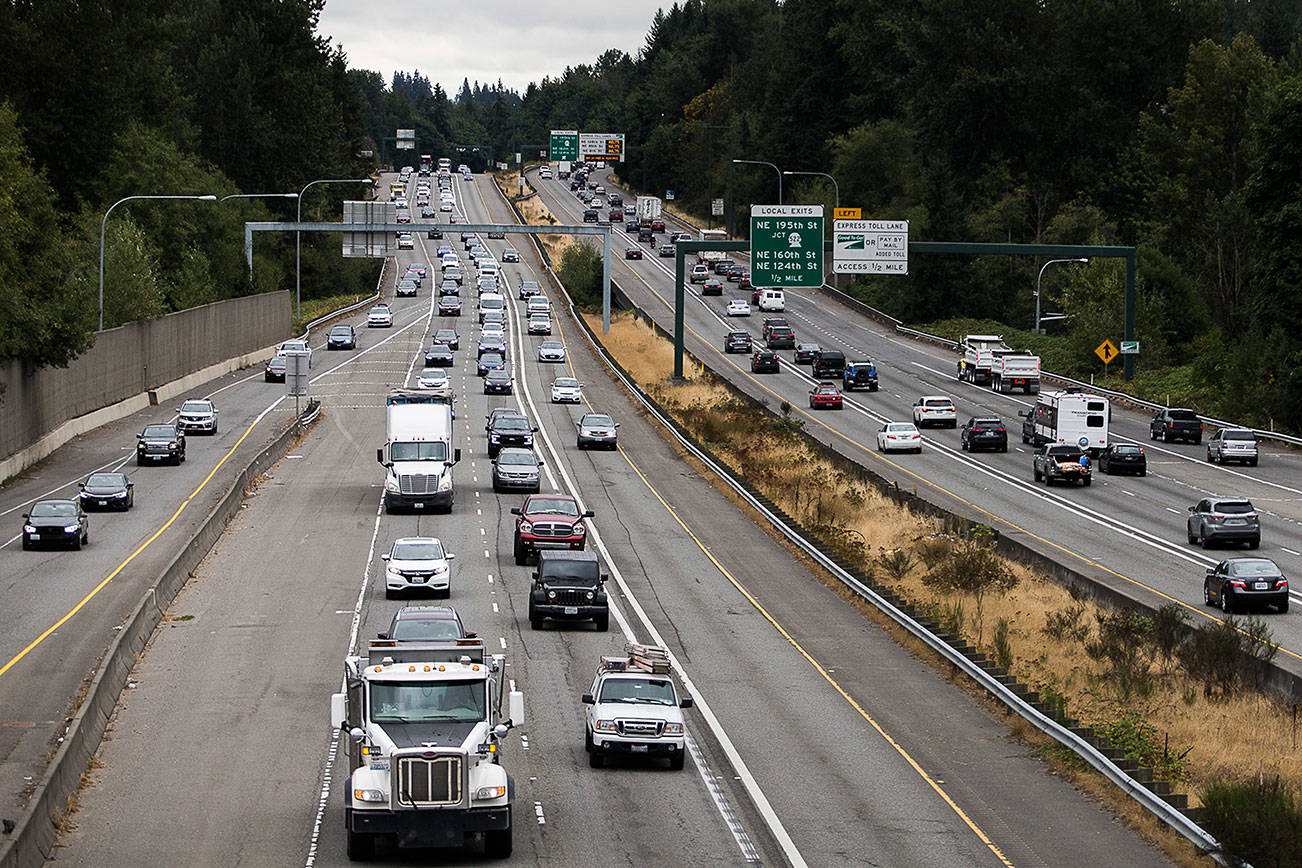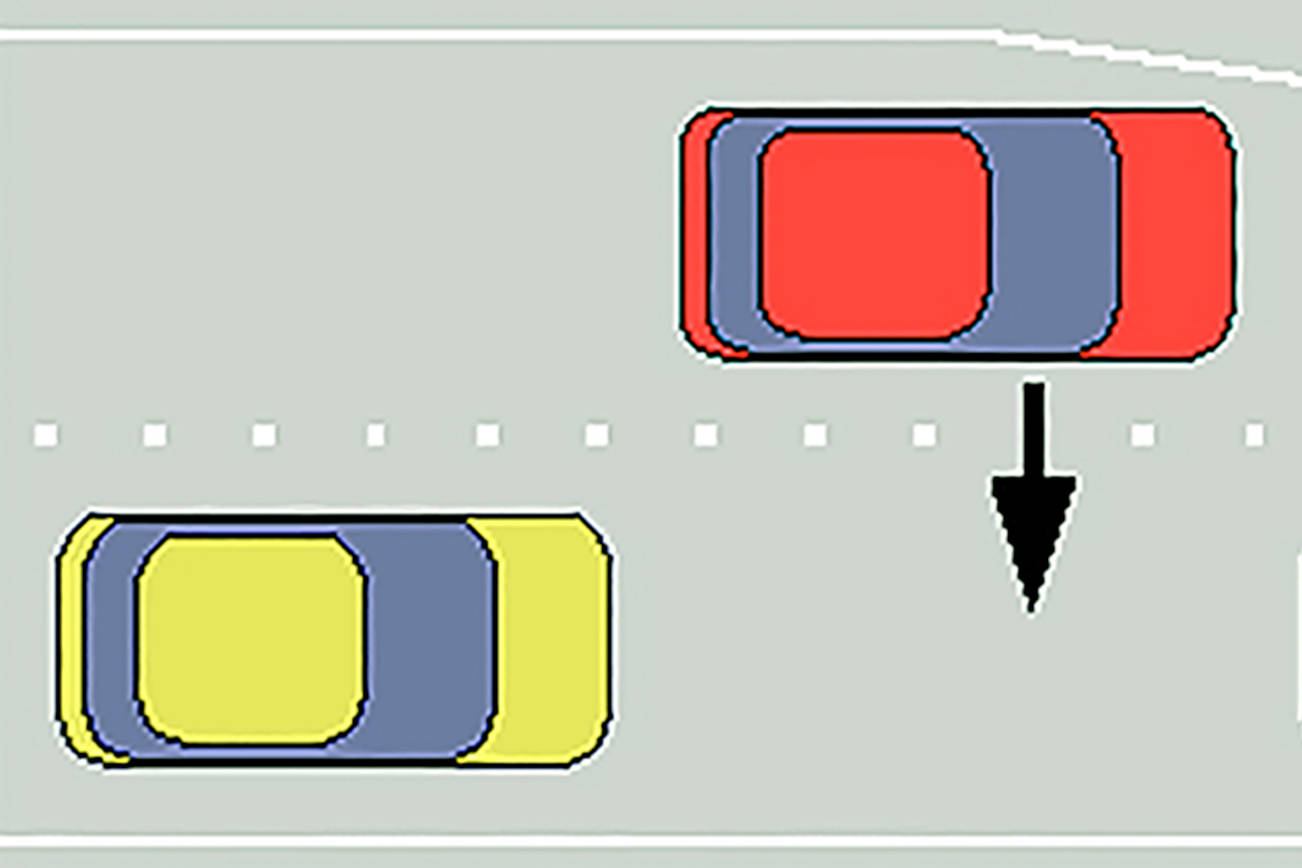Holiday weekend travelers can expect mostly sunshine into Independence Day — and plenty of company.
AAA, the travel and insurance organization, projects a record-breaking 50.7 million people going at least 50 miles from home this year nationwide.
As with most holiday weekends, driving is the top transportation choice for an estimated 43.2 million, 2% more than last year and 4% higher than 2019. Lower gas prices from last summer is probably a factor, according to AAA.
That could create busy highways and interstates in Washington, including the I-90 and U.S. 2 mountain passes going east Friday and Saturday, then westbound Monday and Tuesday.
The state Department of Transportation regularly publishes holiday weekend travel charts for three-day weekends. But there were too many variables with Independence Day falling on Tuesday this year.
INRIX, a transportation data company based in Kirkland, projects Seattle to have some of the worst traffic in the nation, with Friday the busiest day for travel. The peak congestion is estimated at 3 p.m. Friday between Seattle and Ellensburg on I-90. The trip, normally about an hour and 45 minutes, is projected to take an extra 45 minutes.
Recommended travel times in general from INRIX are before noon Thursday, before 10 a.m. or after 6 p.m. Friday, before noon Saturday, and before 11 a.m. and after 6 p.m. Tuesday.
“With record-breaking travelers expected on the road this holiday weekend, drivers should prepare for above-average delays to their favorite destinations,” INRIX transportation analyst Bob Pishue said in a news release. “Using traffic apps, local DOT notifications, and 511 services are key to minimizing holiday travel traffic frustrations this Independence Day.”
People familiar with crossing the I-90 and U.S. 2 mountain passes know similar patterns hold. The best bet to beat the worst congestion is to leave early in either direction, if possible. Midday travel tends to see the highest traffic volume.
With high temperatures, travelers should make sure their vehicles are ready for the trek with enough fuel, drinking water and snacks.
Ferry traffic is expected to be heavy most of the weekend, according to Washington State Ferries. In general, the flow goes from the mainland to the islands and parts west Thursday through Saturday, then east and to the mainland Sunday, Monday and Tuesday.
People counting on catching a sailing should be prepared for even longer waits because trips could be canceled with short notice while the ferry system operates without relief crewing. Ferry travelers can check the real-time map and sign up for rider alerts for updated information.
Early morning and late evening trips tend to be less crowded for vehicles, and ditching the car and walking on when possible can help skirt long waits.
